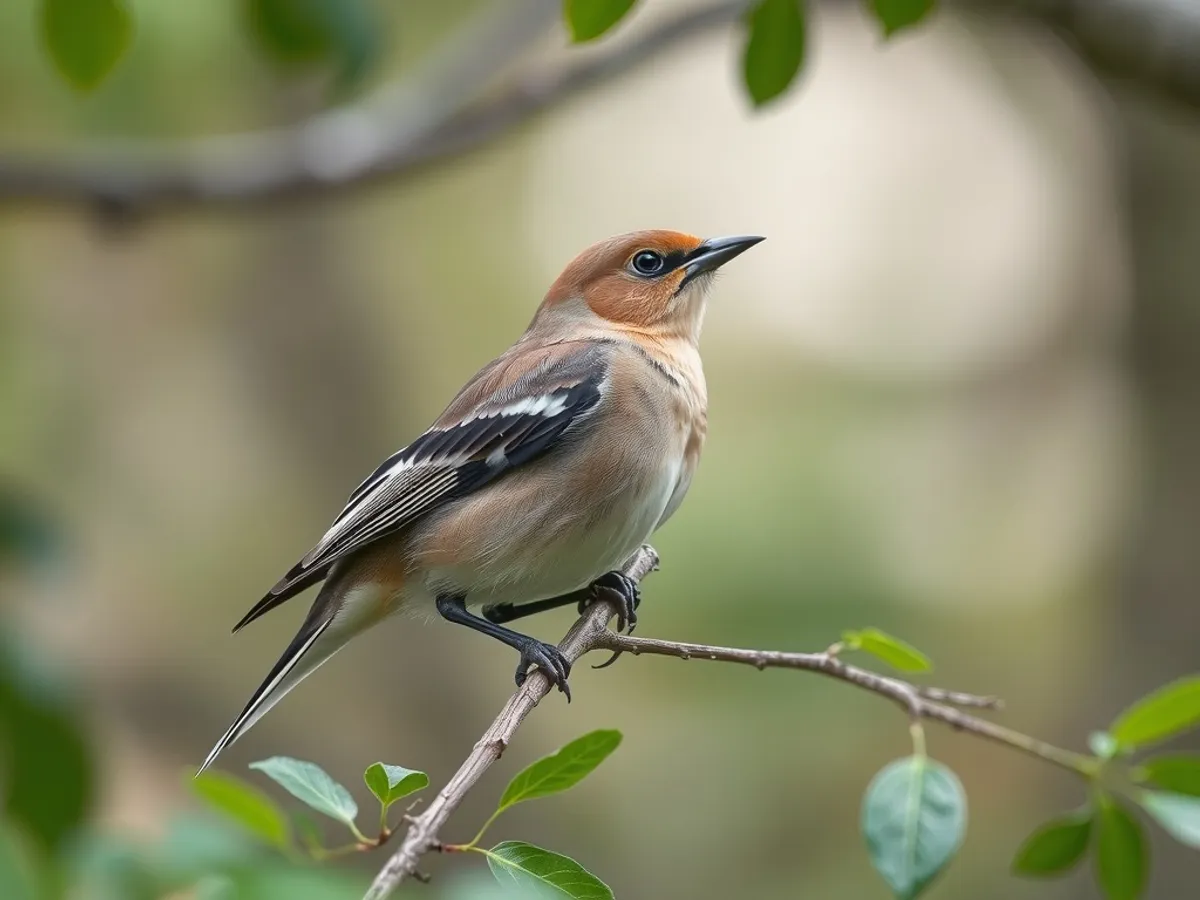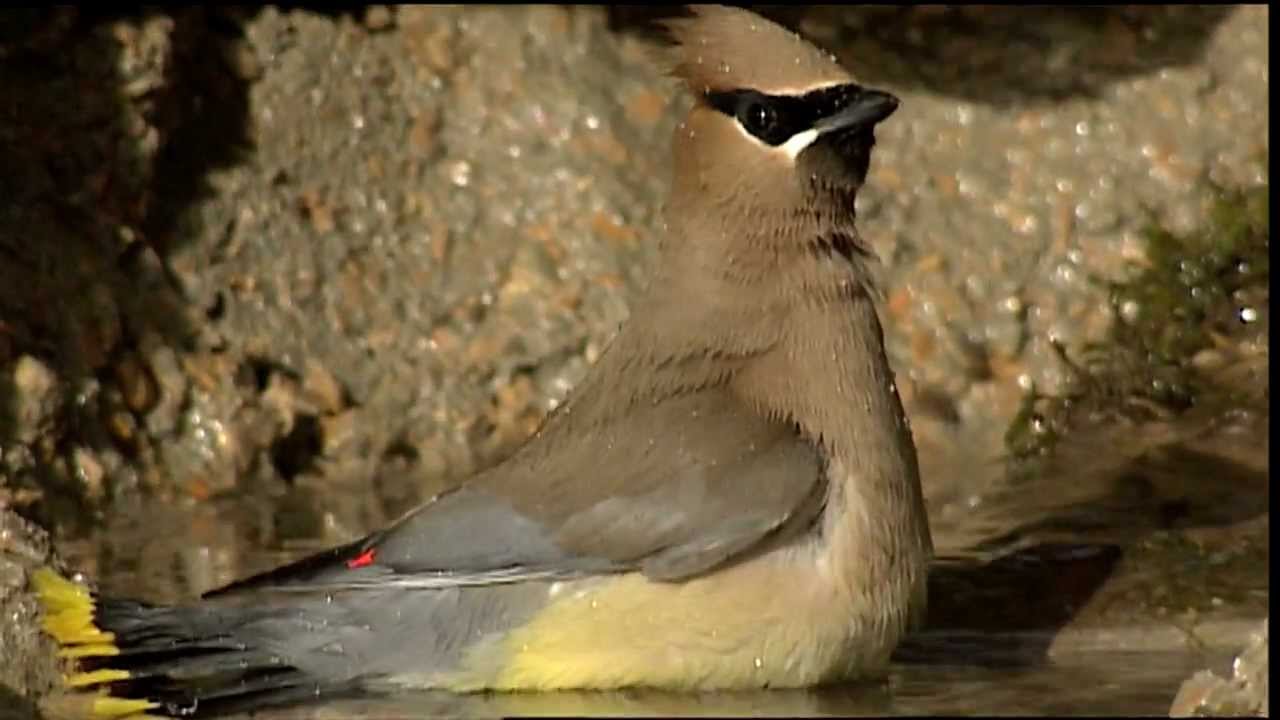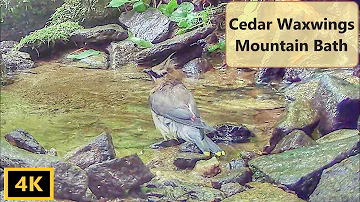
Cedar Waxwing
Bombycilla cedrorum

Meet the Cedar Waxwing
The Cedar Waxwing is a sleek, medium-sized songbird known for its silky plumage, black mask, and distinctive red wax-like tips on its wing feathers. This bird is highly social, often seen in flocks as it feeds on berries and fruit in woodlands and suburban areas. Cedar Waxwings are recognized for their graceful, darting flight and soft, high-pitched calls. Their unique appearance and gregarious behavior make them a favorite among birdwatchers across North America.
Classification
Bird
Habitat
Open woodlands, orchards, and suburban areas
Diet
Omnivore
Lifespan
5-7 years
Conservation
Least Concern
Weight
30-35 g
📖Fascinating Facts
Fruit Lovers
Cedar Waxwings primarily eat fruit and are among the few North American birds that can survive almost entirely on fruit for long periods.
Flock Flyers
These birds are highly social and often travel in large, tight-knit flocks, especially during the non-breeding season.
Distinctive Plumage
Cedar Waxwings are easily identified by their sleek, brown and gray plumage, yellow-tipped tails, black face masks, and waxy red wing tips.
📋Detailed Description
The Cedar Waxwing (Bombycilla cedrorum) is a medium-sized passerine bird, typically measuring 15–18 cm (6–7 in) in length and weighing 30–35 g (1.1–1.2 oz). It is distinguished by its sleek, silky plumage, which is predominantly pale brown on the head and chest, fading to soft gray on the wings and back, with a yellow belly and undertail coverts. The bird's most striking features include a prominent crest, a narrow black mask bordered with white, and bright red, wax-like tips on the secondary wing feathers—an adaptation thought to play a role in mate selection. The tail is tipped with a bright yellow band, which may appear orange in individuals that consume invasive honeysuckle berries rich in carotenoids. Cedar Waxwings are highly gregarious, often forming large, cohesive flocks outside the breeding season. Their flight is strong and direct, characterized by rapid wingbeats and short glides. The species is known for its soft, high-pitched trilled calls and a repertoire of thin, sibilant vocalizations. Cedar Waxwings are primarily frugivorous, but their diet shifts seasonally to include insects, especially during the breeding season. They are nomadic, moving in response to fruit availability rather than following strict migratory routes. Their social and feeding behaviors are highly synchronized, and they are often observed passing berries from bird to bird in a line.
💡 Did you know?
Cedar Waxwings can pass berries to each other in a row, forming a 'food chain' before one bird finally eats the fruit.
🔬Research & Sources
Wikipedia Summary
The cedar waxwing is a member of the family Bombycillidae or waxwing family of passerine birds. It is a medium-sized bird that is mainly brown, gray, and yellow. Some of the wing feathers have red tips, the resemblance of which to sealing wax gives these birds their common name. It is a native of North and Central America, breeding in open wooded areas in southern Canada and wintering in the southern half of the United States, Central America, and the far northwest of South America. Its diet includes cedar cones, fruit, holly berries, and insects. The cedar waxwing is listed as least concern on the IUCN Red List.
Last Modified: 5/30/2025
🎭Behavior & Social Structure
Cedar Waxwings exhibit complex social behaviors, maintaining tight flock cohesion year-round except during nesting. They forage in groups, often descending en masse on fruiting trees and shrubs, where they pluck berries with quick, precise movements. During summer, they supplement their diet with flying insects, which they catch in agile, acrobatic sallies. Waxwings are known for their 'berry-passing' behavior, where individuals will pass a fruit along a line of birds until one eats it, possibly reinforcing social bonds. They are diurnal, spending most of the day feeding and preening. Roosting occurs communally, often in dense foliage. Aggression is minimal; instead, they display mutual grooming and synchronized movements. During courtship, pairs engage in ritualized feeding, hopping, and passing of objects such as petals or fruit.
👶Reproduction & Life Cycle
Breeding occurs from late May to early August, with timing varying by latitude. Cedar Waxwings are monogamous within a breeding season, and both sexes participate in nest building, which takes 5–7 days. The nest is a loose cup constructed from twigs, grasses, and lined with softer materials, typically placed 2–15 m (6–50 ft) above ground in a tree or shrub. Females lay 2–6 pale blue or grayish eggs, which are incubated for 11–13 days, primarily by the female. Both parents feed the altricial chicks, which fledge at about 14–18 days post-hatching. Multiple broods may be raised in a season if food is abundant. Parental care is extended, with fledglings remaining dependent for several days after leaving the nest.
🛡️Adaptations & Survival
Cedar Waxwings possess several adaptations for their specialized diet and social lifestyle. Their short, broad bills are ideal for plucking and swallowing whole berries. The digestive tract is adapted for rapid fruit processing, allowing them to exploit ephemeral food sources. The red waxy tips on their wing feathers are composed of pigmented keratin and may serve as visual signals in mate selection, with older birds displaying more prominent tips. Their gregariousness reduces predation risk and increases foraging efficiency. The ability to metabolize ethanol from fermented fruit is notable, though intoxication can occur with overconsumption. Seasonal dietary flexibility—shifting from fruit to insects—supports reproductive needs for protein. Their nomadic tendencies enable them to track fruiting events across broad landscapes.
🎨Cultural Significance
Cedar Waxwings have long been admired for their beauty and social nature, featuring in North American folklore as symbols of gentleness and sociability. Their presence in orchards and gardens is often welcomed, although they can sometimes be seen as pests when they consume commercial fruit crops. The species is a favorite among birdwatchers and is frequently depicted in art and literature for its elegant appearance. There are no significant traditional uses, but their role as seed dispersers is ecologically important, contributing to the propagation of native and ornamental plants.
🔬Recent Research & Discoveries
Recent research has focused on the effects of diet on plumage coloration, particularly the influence of non-native berries on tail band color. Studies using stable isotope analysis have provided insights into migratory connectivity and dietary shifts. Investigations into social behavior have revealed complex flock dynamics and low levels of intraspecific aggression. Genomic studies are beginning to elucidate the evolutionary history of Bombycillidae, clarifying relationships with Old World waxwings. Ongoing monitoring of population trends is facilitated by citizen science initiatives such as eBird, which help track distributional changes in response to climate and habitat alteration.
🎥Wildlife Videos

Cedar and Bohemian Waxwings | The Peaceable Flock Birds
The Cedar Waxwing is one of the few North American birds that specializes in eating fruit. It can survive on fruit alone for several ...
Lesley the Bird Nerd

BirdBytes - Cedar Waxwings, the Ultimate Berry Munchers
birds Learn about the unusual diet and unique ecology of Cedar Waxwings with biologist Shane Abernethy and the help of some ...
Beaverhill Bird Observatory

Cedar Waxwing
Learn more about this colorful, exotic-looking species that likes to hang out in flocks.
Cornell Lab of Ornithology

Cedar Waxwing's Mountain Bath
Natural Birdbath Saturday Special. Some Cedar Waxwings are breeding residents of Backyard North in the spring and summer ...
MyBackyardBirding

The Cedar Waxwing
McGill Bird Observatory Coordinator Simon Duval talks about a species which is regularly captured and banded at the Stoneycroft ...
L'Observatoire d'Oiseaux de McGill

Cedar Waxwing | The Elegant Beauty of Bombycilla Cedrorum in Nature
Discover the graceful charm of the Cedar Waxwing, a bird known for its sleek plumage, soft colors, and unique social behaviors.
Sounds Of Nature For All
🌍Habitat Information
The Cedar Waxwing typically inhabits Open woodlands, orchards, and suburban areas environments. Cedar Waxwings have adapted to their environments with specialized features and behaviors.
Primary Habitat:
Open woodlands, orchards, and suburban areas
More detailed habitat information will be available soon.
🛡️Conservation Status
The Cedar Waxwing is currently classified as Least Concern. Conservation efforts are crucial for preserving this species for future generations.
Common Threats:
- 🏠Habitat loss and fragmentation
- 🌡️Climate change impacts
- 🎯Hunting and poaching
- 🏭Human-wildlife conflict
⚠️Threats & Conservation Challenges
Currently, Cedar Waxwings face few major threats and are classified as Least Concern by the IUCN. However, local populations may be impacted by habitat loss due to urbanization and agricultural expansion, which can reduce nesting and foraging sites. Collisions with glass windows and vehicles are a significant source of mortality, especially in urban areas. Pesticide use can reduce insect prey and contaminate fruit sources. Ingestion of invasive honeysuckle berries, while providing food, can alter plumage coloration and potentially affect mate choice. Climate change may shift fruiting phenology, affecting food availability during critical periods. Despite these challenges, the species' adaptability and wide range have supported stable population trends.
🔬Scientific Classification
Scientific Name
Bombycilla cedrorum
Classification Hierarchy
🔍 About Taxonomic Classification
Taxonomic classification is a hierarchical system used by scientists to classify and organize living organisms based on shared characteristics and evolutionary relationships.
The system moves from broad categories (Kingdom) to increasingly specific ones, with each animal's scientific name typically consisting of its Genus and species.
📝Community Notes
Share your observations and insights about the Cedar Waxwing with our community of wildlife enthusiasts.
Join Our Community
Sign in to share your observations and connect with fellow wildlife enthusiasts.
Sign In to ContributeNo community notes yet
Be the first to share your observations about the Cedar Waxwing!
Explore Cedar Waxwing
Select a tab above to learn more about this amazing animal.
📸Photo Gallery
No photos available for this animal yet.
🌟Discover More Wildlife
Continue your journey of discovery with more fascinating animals from our database
